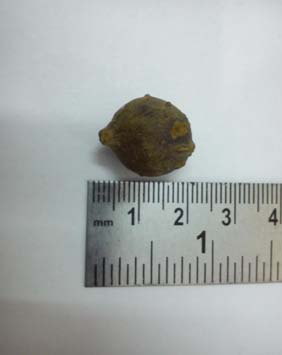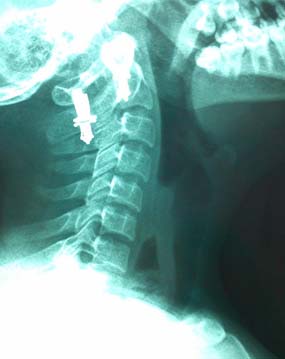Desire of Bearing a Child took a Wrong Turn!!
Sharad Hernot1, Raman Wadhera2, Madhuri Kaintura3
1 Senior Resident, Department of Ear, Nose and Throat, Pandit Bhagwat Dayal Sharma Post Graduate Institute of Medical Sciences, Rohtak, Haryana, India.
2 Professor, Department of Ear, Nose and Throat, Pandit Bhagwat Dayal Sharma Post Graduate Institute of Medical Sciences, Rohtak, Haryana, India.
3 Junior Resident, Department of Ear, Nose and Throat, Pandit Bhagwat Dayal Sharma Post Graduate Institute of Medical Sciences, Rohtak, Haryana, India.
NAME, ADDRESS, E-MAIL ID OF THE CORRESPONDING AUTHOR: Dr. Sharad Hernot, Pocket-AP, 115-A, Virat Apartments, Pitampura, Delhi-110034, India.
E-mail: hernots@yahoo.com
Dear Editor,
Worldwide there are many reports on aerodigestive tract Foreign Bodies (FB). These FBs can lead to potentially serious complications thus, increasing the morbidity and mortality. FB ingestion occurs commonly in children. In adults, the underlying cause is usually accidental or suicidal. Objects that are frequently ingested include coins, food products, buttons, plastic items, marbles, crayons, batteries, screws, etc. A variety of sharp foreign bodies have also been described in literature including safety pins, bones, broken edges of toys, drawing pins and wires. Gallnut (Q. infectoria) has rarely been implicated for this.
The authors present the case of a 22-year-old female presented to emergency with chief complaints of uneasiness in the throat, dysphagia, drooling of saliva and retching for the past 2 hours. The patient gave history of ingesting a fruit nut (Q. infectoria) which was prescribed to her by an Ayurvedic doctor [Table/Fig-1]. The nut was given to her for not being able to conceive a child even after multiple attempts in the past few years. The patient had been married for 2 years and wanted to have a child. She was advised to take this magic nut/gallnut (Quercus infectoria) once a week till she got pregnant. She also gave history of ingesting one such nut exactly 1 week earlier. The nut that had been ingested in this case is commonly referred to as ‘majuphal’ also known as Quercus infectoria or Gall oak or magic nut. Q. infectoria (Family: Fagaceae) commonly known as gall oak, is a 4-6 feet shrub native to Greece, Asia Minor and Iran. The gall arising in the branches of the tree is called as ‘majuphal’ in Hindi and ‘mayaphala’ in Sanskrit [1].
Fruit nut/magic nut/gall oak /Quercus infectoria.

On the basis of history and physical examination, X-ray soft tissue neck (AP and Lateral view) were done which showed radiolucent shadow in the oesophagus at the level of C6-C7 [Table/Fig-2]. Patient was taken for rigid oesophagoscopy under general anaesthesia. A rigid oesophagoscope was introduced and the nut was visualized at 16cm from upper incisors i.e., just below the cricopharyngeal sphincter. It had become soft and soggy and there was also proximal mucosal oedema. Both these factors made this procedure very challenging. The clamminess of the seed caused it to break and come out piece meal with the help of alligator forceps. There was no bleeding and no evidence of any breach in the oesophageal mucosa. The oseophagoscope was withdrawn and the patient was shifted to recovery room.
X-ray soft tissue neck showing radiolucent shadow in the oesophagus at the level of C6-C7.

The patient had an uneventful recovery and having shown no symptoms of oesophageal perforation, she was discharged on day three. She came to the Outpatient Department on day eight with no complaints.
On reviewing literature, this nut has been rarely reported as a foreign body oesophagus case. Our case is a big example that in a fast developing country like India, the social pressure is so huge, that it can lead to irrationality even in the educated classes thus, leading to significant morbidity. The humiliation and stress of not being able to bear a child can result in seeking treatment from alternative forms of medicine which can prove to be not so useful like in our case.
Therefore, history taking is important in which patient should be asked if he/she is using any alternate form of medicine because it can tell us a lot about the cause of many symptoms which the patient may be suffering from.
[1]. Lim TK, Quercus infectoria In: Edible Medicinal and Non-Medicinal Plants 2012 NetherlandsSpringer:16-26. [Google Scholar]